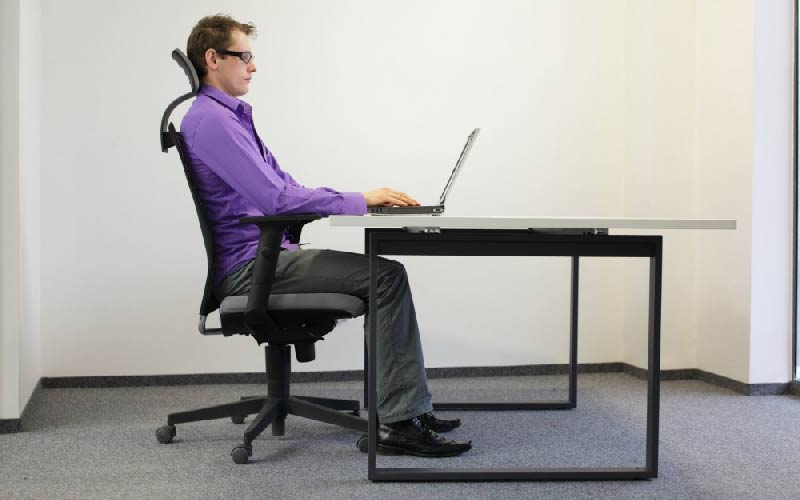Introduction:
In the digital age, where hours are spent hunched over screens and sedentary activities dominate our daily lives, skeletal problems have become increasingly prevalent. From back pain to more serious musculoskeletal issues, our bodies bear the brunt of poor posture and improper sitting habits. In this comprehensive guide, we’ll explore effective ways to reduce skeletal problems and delve into the art of sitting properly to promote optimal spinal health.
Section 1: The Impact of Skeletal Problems
1.1 Understanding Skeletal Problems:
Skeletal problems encompass a range of issues affecting the bones, joints, and supporting structures. Prolonged poor posture and improper sitting can contribute to misalignments, muscle imbalances, and, in severe cases, chronic skeletal conditions.
1.2 Prevalence in the Modern Lifestyle:
The modern lifestyle, characterized by extended periods of sitting and sedentary work, has led to a surge in skeletal problems. These issues not only affect physical health but can also have implications for mental well-being and overall quality of life.
1.3 The Domino Effect:
Neglecting skeletal health can set off a domino effect, impacting daily functioning, reducing mobility, and contributing to a cycle of discomfort and pain. Recognizing the interconnectedness of our skeletal system emphasizes the importance of proactive care.
Section 2: Effective Ways to Reduce Skeletal Problems
2.1 Regular Exercise:
Engaging in regular physical activity is a cornerstone of skeletal health. Activities that strengthen muscles, improve flexibility and promote overall fitness play a crucial role in preventing skeletal problems. Incorporate a mix of aerobic exercises, strength training, and flexibility exercises into your routine.
2.2 Ergonomic Practices:
Adopting ergonomic practices both at work and home can significantly reduce the risk of skeletal issues. Ensure your workspace is set up to support good posture, with an ergonomic chair, proper desk height, and regular breaks to stretch and move.
2.3 Maintain a Healthy Weight:
Excess weight puts additional stress on the skeletal system, particularly the spine and joints. Maintaining a healthy weight through a balanced diet and regular exercise can alleviate this stress and reduce the risk of skeletal problems.
2.4 Stay Hydrated:
Proper hydration is essential for maintaining the health of your joints and connective tissues. Water supports the lubrication of joints, preventing stiffness and discomfort. Aim to drink an adequate amount of water throughout the day.
2.5 Posture Awareness:
Cultivate awareness of your posture in various activities. Whether sitting, standing, or walking, consciously maintain a neutral spine position. Regularly check in with your posture to avoid prolonged periods of misalignment.
Section 3: The Art of Sitting Properly
3.1 Importance of Sitting Properly:
Given the prevalence of sedentary lifestyles, mastering the art of sitting properly is crucial. Proper sitting not only reduces the risk of skeletal problems but also promotes overall comfort, productivity, and spinal well-being.
3.2 Key Elements of Proper Sitting:
- Chair Selection: Choose an ergonomic chair that supports the natural curve of your spine. Adjust the chair height so that your feet rest flat on the floor.
- Posture: Sit back in the chair with your back straight, shoulders relaxed, and elbows close to your body. Avoid slouching or leaning forward for extended periods.
- Screen Height: Position your computer screen at eye level to reduce strain on your neck and upper back. Maintain a comfortable viewing distance.
3.3 Taking Breaks:
Break up long periods of sitting by incorporating short breaks. Stand up, stretch, and move around every 30 minutes to alleviate pressure on your spine and promote circulation.
3.4 Desk Ergonomics:
Arrange your desk to support proper posture. Keep frequently used items within reach to avoid excessive twisting or reaching. Use a document holder to position papers at eye level.
3.5 Lumbar Support:
Utilize lumbar support to maintain the natural curve of your lower spine. If your chair lacks built-in support, consider using a cushion or rolled-up towel to provide additional lumbar support.
Conclusion: Prioritizing Skeletal Health for a Better Tomorrow
In conclusion, reducing skeletal problems and mastering the art of sitting properly require a proactive and holistic approach to well-being. By incorporating regular exercise, ergonomic practices, and posture awareness into our daily lives, we can mitigate the risks associated with skeletal issues. The art of sitting properly is not just about physical comfort but serves as an investment in our long-term health and quality of life. Let’s embrace these practices, prioritize our skeletal health, and pave the way for a future where skeletal problems are minimized, and our bodies thrive in optimal well-being.

